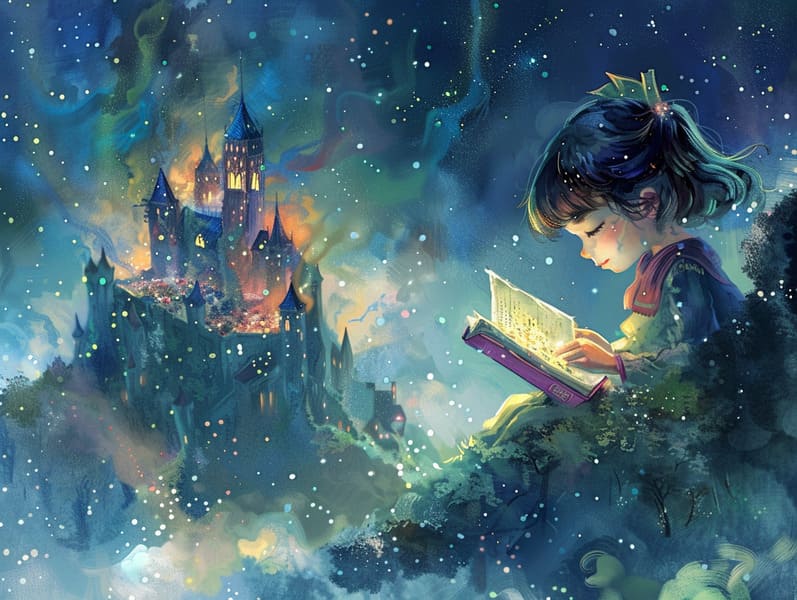The Beginning of Famous Fairy Tales with the Steadfast Wonder.
The Beginning of Famous Fairy Tales with the Steadfast Wonder.
Blog Article

Timeless fairy tales have legendary status. These stories have been spoken from one generation to the next well before they were ever written down. They came from a variety of cultures, including African traditions. They were initially transmitted among elders, often carrying themes and messages aligned with the societal norms and beliefs of the time.
The Grimm brothers, Jacob and Wilhelm Grimm, were among the first to compile and publish many of these beloved stories. Their volume, "Grimm's Fairy Tales," included stories like "The Story of Cinderella," "Hansel and Gretel," and "Snow-White and Rose-Red," which have since become pillars in the world of classic fairy tales. Similarly, H. C. Andersen's enchanting fairy tales, such as "The Little Mermaid," and "The Story of the Ugly Duckling," have touched hearts worldwide, securing their place in the pantheon of treasured fairy tales.
Despite their age, traditional fairy tales remain as applicable as ever, especially as bedtime stories for kids. These charming stories are now available in numerous formats, including vividly illustrated books, fantastical animations, and internet fairy tales.
Their enduring popularity can be connected to several magical reasons:
Moral Lessons: Traditional fairy tales often impart important moral lessons. Stories like "The Shepherd Boy and the Wolf" teach the importance of honesty, while "The Story of the Tortoise and the Hare" stress the qualities of determination and meekness. These stories offer kids clear distinctions between ethical and unethical, forming their moral compass in a soft yet lasting way.
Compassion and Knowledge: Classic fairy tales frequently illustrate heroines facing challenges and problems, motivating kids to connect with their struggles and rally behind their triumphs. For instance, "Beauty and the Beast" emphasizes the importance of seeing inner beauty to recognize the inner self of a individual, encouraging kindness and awareness.
Cultural Appreciation: Many timeless fairy tales are steeped in the cultural contexts from which they sprang. Discovering these tales can provide enlightening views into different traditions, developing a sense of cultural insight and knowledge.
Creativity and Imagination: The supernatural elements in timeless fairy tales—spells and potions—fuel children’s innovations. These tales guide readers to extraordinary realms, revitalizing creative ideas and a sense of amazement that persists a lifetime.
Classic fairy tales are not only delightful but also informative. They provide enchanted tools in promoting various intellectual and emotional capacities in little ones. When classic fairy tales are told out loud, they promote verbal skills by introducing new linguistic elements and detailed sentence structures. This practice also improves auditory skills and attention span, as young ones track the narrative, prepared to see what happens next.
Furthermore, exploring the themes and characters of old fairy tales can strengthen cognitive skills and analytical skills. Children learn to find patterns, predict happenings, and figure out cause and effect. These conversations also advance young ones verbalize their thoughts and feelings, adding to their emotional intelligence.
In today’s digital age, the presence of digital fairy tales has made these stories more reachable than ever. Internet sites and web apps present extensive collections of popular fairy tales that can be viewed or listened on anytime, anywhere. Fairy tales told out loud are particularly sought after, featuring an interactive method for the young to relish these whimsical stories. Read-aloud stories and read-to-me stories guide characters and settings to life, often complemented by enchanting background sounds and background music that amplify the tale journey.
The lasting allure of ancient fairy tales lies in their ability to transform to current times while keeping hold of their core values. Contemporary revisions of these tales often showcase more these guys varied protagonists and modern settings, making them pertinent to today’s audience. However, the fundamental themes of gallantry, goodness, and righteousness remain unchanged, continuing to connect with young listeners of all ages.
Traditional fairy tales also offer a sense of protection and knowability. They deliver up a structured narrative with a apparent beginning, middle, and end, often drawing to a close with the resolution of conflicts and the triumph of virtue over corruption. This predictability can be relieving for the young, allowing a sense of constancy in an fluctuating world.
Ancient fairy tales continue to bewitch and train new generations, maintaining their grandeur and significance in modern society. As kids' bedtime tales, they confer a perfect blend of charm and enlightenment, promoting moral values, empathy, and creativity. The existence of online storybooks and the likability of fairy tales read out loud affirm that these traditional stories remain available to new generations.
By protecting and passing on these fairy tales, we continue to recognize the rich tapestry of tales and cultural heritage. Whether you are browsing a vibrantly illustrated book, experiencing a cyber library, or listening via an sound book, the beauty of old fairy tales is always within reach. These fairy tales show us of the timeless spell of narratives and its ability to draw us together across centuries and lands.
Even if you are delving into a vibrantly illustrated book, perusing a online library, or hearing an sound book, the magic of timeless fairy tales is always within reach.
These tales highlight of the lasting influence of narratives and its ability to gather us across centuries and lands, forging a link that fascinates and enlightens alike.